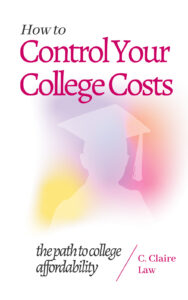There are over 300 private boarding schools in the U.S. They serve over 100,000 domestic and foreign students. By definition, a boarding school is a school where some or all pupils study and live during the school year with their fellow students and possibly teachers or administrators. The word “boarding” is used in the sense of “bed and board,” i.e., lodging and meals.
Why choose a boarding school as a secondary educational option?
1. Maturity development
The boarding school grad is fully prepared to address the transition into adulthood. The student is:
- ready for the transition to college
- clear about when, where and how to get academic help
- able to advocate for himself/herself in the adult world
- learning key life skills
- developing social skills and competence
- mastering college level critical thinking and written expression
- able to self-regulate and implement time management skills
- learning how to deal with temptations and understand consequences of poor choices
2. Talent development
Your student has special talents that cannot be developed in your home area:
- Athletics
- Music
- Dance
- Theater
- Fine arts
3. Close connections
Your student has access to teachers and adult role models 24/7 along with the benefit of:
- Small class sizes
- Knowing his/her learning style or best way to learn
- Highly motivated faculty that teach specifically to each student’s preferred learning style
- Seeing instructors in all walks of life and learning they are “approachable”
- A structured approach to education and mandatory study periods
4. A remedy for poor grades or lack of motivation
Boarding can provide a great solution for situations where parents and/or teachers observe and note that their student:
- Has had sudden changes in grades or friends
- Claims school work seems too hard or too easy
- Complains that school work is boring
- Treats school and homework as a distraction
- Demonstrates concrete learning issues
5. A respite from family issues
A stay away from a difficult home situation can really help families dealing with:
- A household move
- Divorce
- Death of parent or sibling
- Parents that do not get along
- A hostile or unsafe environment
- Unrealistic expectations
6. Learning differences
- Multiple boarding options exist that specifically meet the needs of these students
What boarding school students say about their schools compared to their public and private school peers
From a 2012 study comparing public boarding, public and private school
| Positive School Features | Public | Private | Boarding |
|---|---|---|---|
| My school is challenging | 50% | 70% | 91% |
| Around motivated students | 49% | 71% | 75% |
| Opportunity for leadership | 52% | 60% | 77% |
| Very prepared for college | 23% | 36% | 78% |
| Top management mid career | 27% | 33% | 44% |
| Top management late career | 27% | 39% | 52% |
| Advanced degree | 21% | 36% | 50% |
| Great teachers | 51% | 62% | 90% |
| Social safety (drugs/alcohol) | 60% | 82% | 95% |
| Not exposed to cheating | 25% | 31% | 70% |
| College counseling help | 13% | 23% | 41% |
Source: www.boardingschools.com/discover/bigpicture.aspx
Sample Boarding School Selection Timeline
Educational Avenues uses a team approach in working with the student and the family. The entire school selection and application process typically spans 18 months and includes:
Family student expectations/goals (January of the year before entrance year)
- Size
- Geography
- Academically suitable
- Extracurricular and special offerings
- Focus on specific talent or skill development
Student assessment (February-March of the year before entrance year)
- In-depth interviews
- Academic and readiness review
- MMTIC©-personality/learning style
- Personal goals
- SSAT
Assimilate school list fitting family expectations and student assessments (March-June of the year before entrance year)
- Develop in-depth student profile
- Present profile to each school on the list
- Advocate on behalf of student with key school personnel in addition to admissions
- Coaches, academic deans, heads of school, learning specialists etc.
Get congruence from schools on student fit (June-August of the year before entrance year)
- Present list to family (September)
- Prep for school visits and interviews (Fall)
Guide application process for January 15 submission (November-December of the year before entrance year)
- Application submission (January of the entrance year)
- Decision from school by March 10
- Assist family with final decision
- Deposit due April 10


